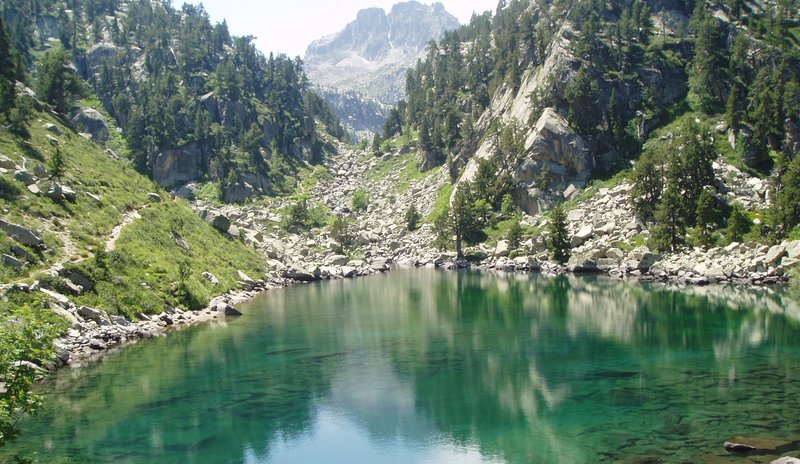Aigüestortes National Park, a landscape of legend
Legend has it that the inhabitants of Espot, in the Pallars Sobirà region, held a gathering every year in the hermitage of Sant Maurici, next to the lake of the same name. But two men from the village, Cristòfol and Esteve, wanted to avoid these religious duties and so instead took the opportunity to do their favourite hobby, going hunting. They went up the mountain, joking and chatting, far away from the Christian devotion that was obligatory among the people of the village that day. And, the story says, probably because of that, when they got to the top, a major storm broke out. There was no place to shelter anywhere and they were both struck by lightning, which left them petrified. Since then, the summit of St. Maurici mountain has been divided into two stone peaks, one for each of the two petrified hunters.
It’s just a legend. But it fits with a long-standing European tradition of stories about irreverent hunters and hostile nature acting in the name of demanding gods. The Pyrenees, a land of witches and legends, is a key part of this tradition centered on imposing nature. And one of the wildest places in the area is the Aigüestortes National Park and Sant Maurici Lake: an extensive territory with virtually no population or human activity, made up of high peaks and boasting countless natural lakes formed by the accumulation of snow on the mountain tops as well as melt from small glaciers that still survive there.
The park has an extensive network of paths and trails of varying difficulty. You can go on gentle excursions with an easy gradient, such as the initial stretch between the village of Espot and the lake of Sant Maurici, or dare to cross the most beautiful and remote areas of the park and go up to the Portarró d’Espot, 2,435 meters high. Recently, the Camins vius initiative was launched, which focuses on old pathways that have been recovered and catalogued, and which allow visitors to do a circular route around the park. The park is also adapted for people with disabilities and there is a 4x4 taxi service that allows people with reduced mobility to visit most of its corners. There are also tourism companies that organise longer and more daring excursions and trips. Traffic, however, is restricted to the park-licensed taxis alone, in order to preserve as much as possible the tranquility of the environment: it is the heart of the Pyrenees, where nature and legends prevail, and where we humans are only passing through.
out & about
A Breton discovery
The Aigüestortes National Park was once only a place crossed by farmers and haulers, and it did not become a leisure and nature destination until 1880. It was the geologist Maurice Gourdon, born in Nantes (Brittany), who, while in the Pyrenees with Occitane friends, first documented and photographed these lands. Without knowing it , Gourdon’s actions were about to change this corner of the Pyrenees forever.

